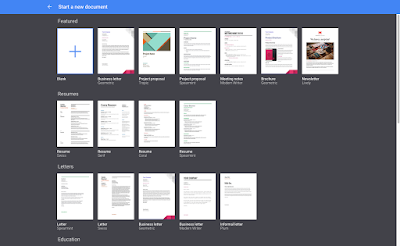Google drive 60 new templates

Google drive have just announced 60 new templates, if you haven’t checked out Google Drive templates yet, now is a good time. Making use of the many Google Drive templates or loading your own business or personal docs as a template for regular use can really save you time in Google Docs. Google drive added new document templates like ,newletter,Buisness letter,Resume templates,Essay,Class notes,Meeting Notes,Broucher,News Letter. To start using templates, log in to your Google Apps account and either visit the url drive.google.com/templates or select Create > From template… from your Google Docs or Google Drive list. Tip Update: From template has now been moved to the File menu when inside an open document. Click on File –> New –> From template . The advantage to this change is that choosing a template from an open spreadsheet will take you to all spreadsheet templates, but it seems l...
